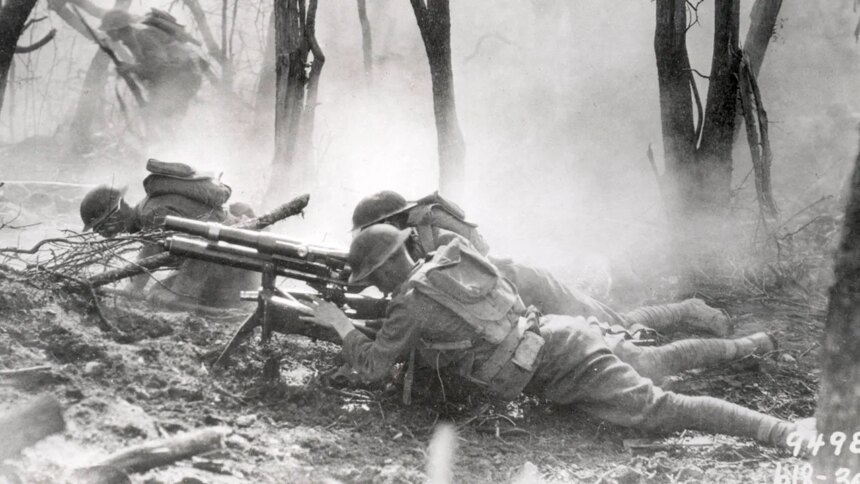The US plunged ferociously into World Battle I following a vote within the Home of Representatives on at the present time in historical past, April 6, 1917.
President Woodrow Wilson requested a declaration of conflict towards Germany earlier than a joint session of Congress on April 2, as the US confronted each the specter of unrestricted submarine warfare from Germany and the potential of its alliance with Mexico to grab huge swaths of the American West.
The Senate voted in favor of the conflict declaration two days later.
Congress concurred on April 6.
ON THIS DAY IN HISTORY, APRIL 5, 1908, ACTRESS BETTE DAVIS BORN IN MASSACHUSETTS: ‘STRONG-WILLED WOMAN’
The US was now dedicated to the tragic Nice Battle, which had consumed a lot of Europe since 1914.
The declaration got here simply 5 months after Democrat Wilson narrowly gained reelection over Republican challenger Charles Evan Hughes by campaigning for peace.

President Woodrow Wilson addresses Congress to declare conflict on Germany in World Battle I 1917. (Common Historical past Archive/Common Pictures Group through Getty Pictures)
“The current German submarine warfare towards commerce is a warfare towards mankind,” Wilson stated in his April 2 handle.
“The problem is to all mankind. Every nation should resolve for itself the way it will meet it.” — Woodrow Wilson to Congress, April 1917
“It’s a conflict towards all nations. American ships have been sunk, American lives taken … and folks of different impartial and pleasant nations have been sunk and overwhelmed within the waters in the identical manner. There was no discrimination. The problem is to all mankind. Every nation should resolve for itself the way it will meet it.”
Germany sparked outrage in the US when considered one of its submarines sank the British cruise ship Lusitania in 1915, killing 1,200 individuals, together with 128 Individuals.
But the U.S. resisted entry into the conflict.
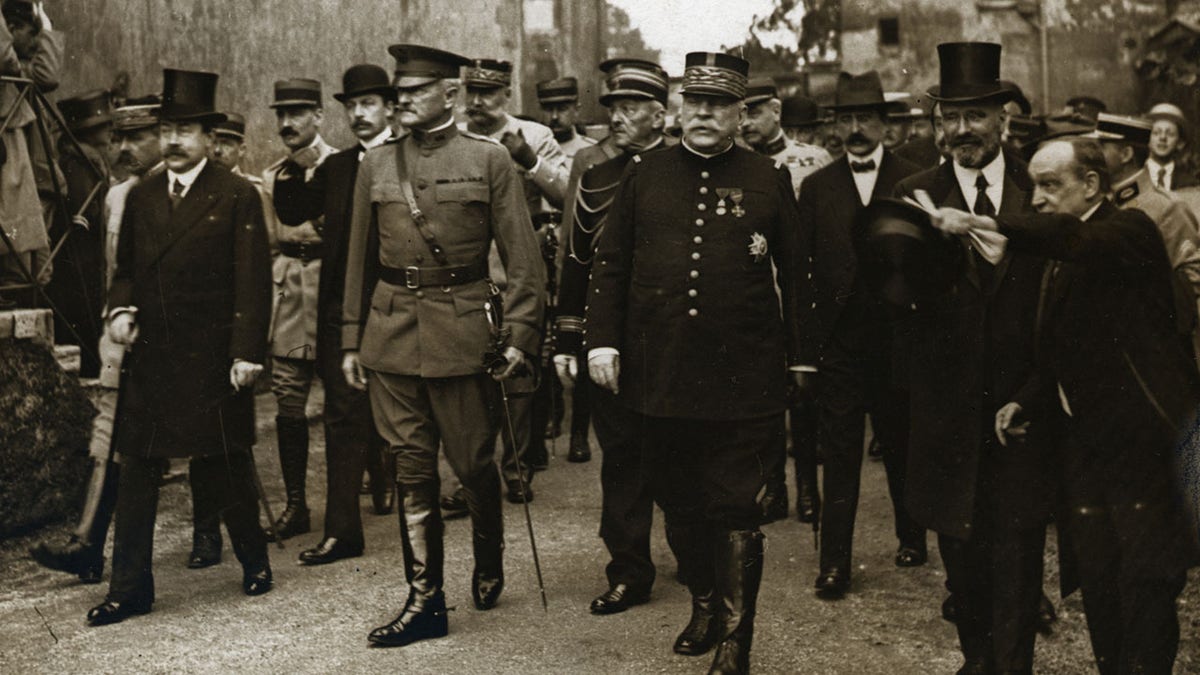
(Unique Caption) 1/25/1918 in Pipus, France: Basic Pershing (1860-1948), Marshall (1880-1959), Joffre (1852-1931), and celebration arrive at Pipus, France, the place Lafayette is buried. (Getty Pictures)
Germany briefly agreed to finish unrestricted submarine assaults in 1916, however reneged on its promise in January 1917.
The renewed risk was accompanied by information on March 1 that officers in Britain had decoded the notorious Zimmerman Telegram.
MEET THE AMERICAN WHO INSPIRED THE NATION IN TWO WORLD WARS: CHRISTIAN SOLDIER SGT. ALVIN YORK
The message from German International Minister Arthur Zimmermann to Mexican leaders supplied to assist America’s border rival seize U.S. territory it misplaced through the Mexican-American Battle of 1846-48.
“The Zimmermann Telegram galvanized American public opinion towards Germany as soon as and for all,” writes the Nationwide World Battle I Museum.
“The Zimmermann Telegram galvanized American public opinion towards Germany as soon as and for all.” — Nationwide World Battle I Museum
The American individuals, lengthy determined to keep away from sending their boys to combat and die on international soil, responded with a nationwide burst of patriotic dedication to the trigger in alliance with France and Nice Britain.

Practically 1,600 American troopers, nearly all killed in World Battle I, relaxation in everlasting reverence on a hill overlooking the Eiffel Tower and the sprawl of Paris on the Suresnes American Cemetery. It is considered one of almost two dozen American cemeteries and memorials in Europe honoring U.S. troops killed in WWI. (Kerry J. Byrne/Fox Information Digital)
“George Cohan’s ‘Over There,’ composed a day after America’s declaration of conflict, summed up the spirit and confidence of the day,” writes the US World Battle I Centennial Fee, whereas the president “ordered ‘The Star-Spangled Banner’ be performed in any respect navy and different acceptable events.”
The defiant tune of American resolve, not but the nationwide anthem, was performed through the seventh-inning stretch of every recreation of the 1918 World Sequence.
AMERICAN SOLDIERS KILLED IN WWI REMEMBERED FOREVER IN NYC ALE HOUSE
There aren’t any stories of gamers kneeling.
The patriotic World Sequence efficiency sparked what’s develop into a pre-game custom at sporting occasions in the US.
“Lafayette, we’re right here!” — Col. Charles Stanton to the French individuals on behalf of Gen. John Pershing
The American Expeditionary Pressure, commanded by Gen. John Pershing, landed in France in June amid nice fanfare and larger hope from determined Allies entrenched in horrific fight at the price of tens of millions of lives.
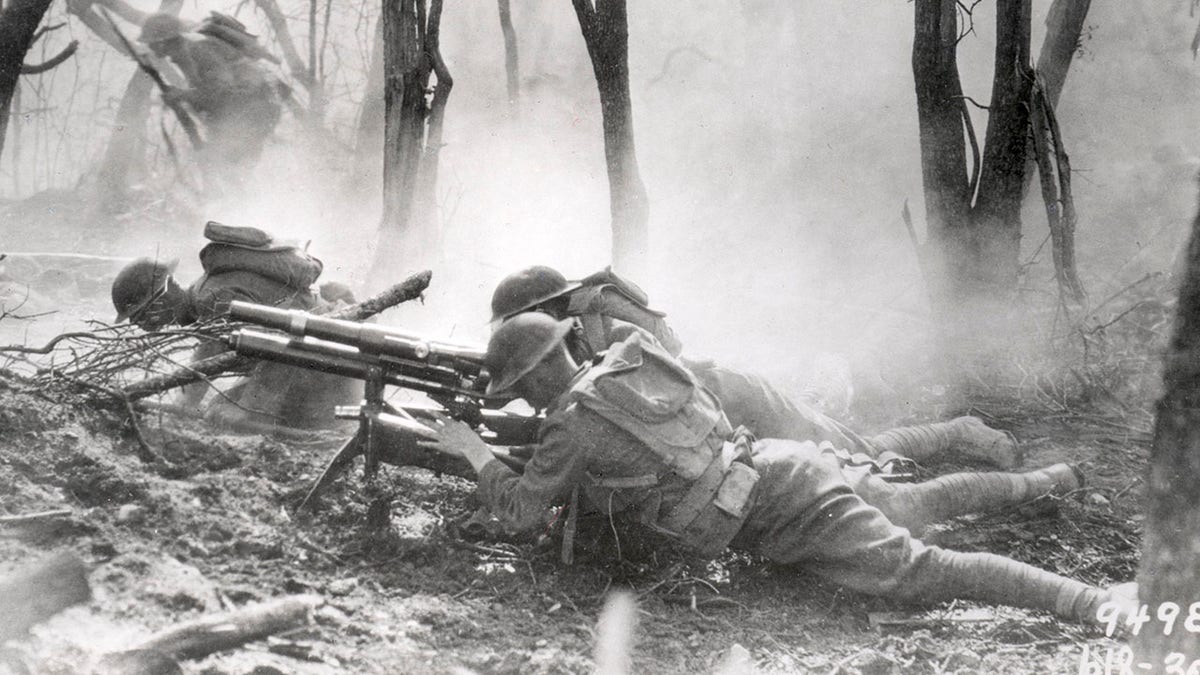
U.S. troopers of the twenty third Infantry, 2nd Division, firing a 37mm machine gun at a German place within the Argonne Forest, through the Meuse-Argonne offensive, Sept. 26-Nov. 11, 1918. (US Military Sign Corps/Training Pictures/Common Pictures Group through Getty Pictures)
The AEF marched by Paris on July 2 for a ceremony on the grave of the Marquis de Lafayette.
The teenage French nobleman flouted the orders of King Louis XVI to combat heroically in the reason for the American Revolution.
ON THIS DAY IN HISTORY, SEPTEMBER 6, 1757, MARQUIS DE LAFAYETTE IS BORN, HERO OF TWO REVOLUTIONS
“Lafayette, we’re right here!” Col. Charles Stanton proclaimed on behalf of Gen. Pershing, acknowledging that the US had come to repay its debt to France.
The fee was tragic.
Over 116,000 American doughboys have been killed, and 204,000 extra wounded, from the time U.S. forces entered fight in October 1917 to the tip of the conflict only a yr later, in November 1918.
Over 116,000 American doughboys have been killed, and 204,000 extra wounded, in only one yr of fight in World Battle I.
Gen. Pershing led huge offensives within the autumn of 1918 that broke the four-year stalemate on the Western Entrance, most notably the Meuse-Argonne Offensive from September by November.
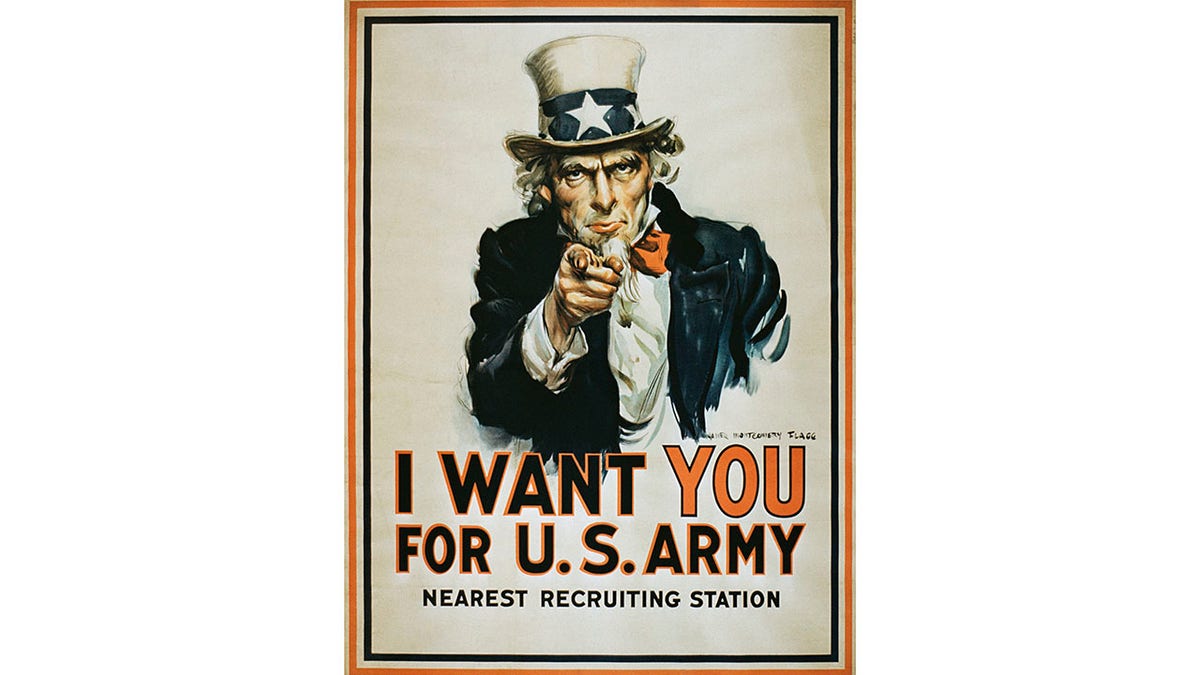
James Montgomery Flagg’s Uncle Sam “I Need You” 1917 WWI recruiting poster has develop into one of the vital enduring pictures in U.S historical past. (Getty Pictures)
“The Meuse-Argonne Offensive was the biggest operation of the American Expeditionary Forces (AEF) in World Battle I, with over 1,000,000 American troopers taking part,” in line with the Nationwide Archives.
The US suffered a staggering 120,000 casualties, together with greater than 26,000 doughboys killed in motion, in simply six weeks of fight.
CLICK HERE TO SIGN UP FOR OUR LIFESTYLE NEWSLETTER
The sweeping offensive captured 200 sq. miles of German-held territory in France — an unbelievable achieve amongst sides that fought bitterly over inches for years — and successfully gained the conflict.
Greater than 14,000 U.S. troopers troops are buried at present within the Meuse-Argonne American Cemetery in France, the biggest resting place among the many dozens of cemeteries for American conflict useless in Europe.
ON THIS DAY IN HISTORY, FEBRUARY 21, 1916, CATASTROPHIC BATTLE OF VERDUN BEGINS WITH GERMAN ATTACK ON FRANCE
Many celebrated American navy heroes fought as younger troopers in Europe in World Battle I and later led the Allied effort in World Battle II.
Amongst them: George C. Marshall, Douglas MacArthur and George S. Patton.
Dwight Eisenhower, the Supreme Allied Commander in Europe in World Battle II, served stateside in World Battle I.
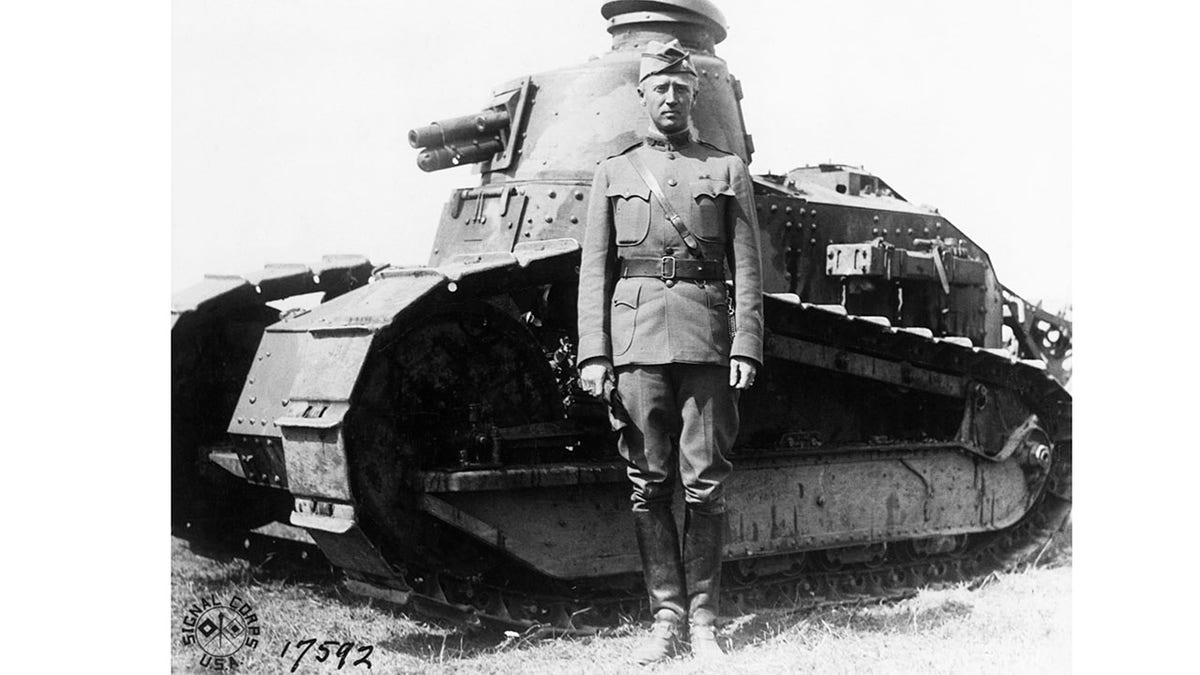
George S. Patton Jr. poses with a tank from his tank corps throughout a command as a lieutenant colonel in France throughout World Battle I. (Photograph by © CORBIS/Corbis through Getty Pictures)
“By the point Germany signed the Armistice on November 11, 1918, the American Expeditionary Forces had developed into a contemporary, combat-tested military acknowledged as probably the greatest on the planet,” writes the Library of Congress.
CLICK HERE TO GET THE FOX NEWS APP
“World Battle I offered the US with helpful strategic classes and an officer corps that might develop into the nucleus for mobilizing and commanding 16 million American navy personnel in World Battle II.”
For extra Life-style articles, go to www.foxnews.com/life-style.

